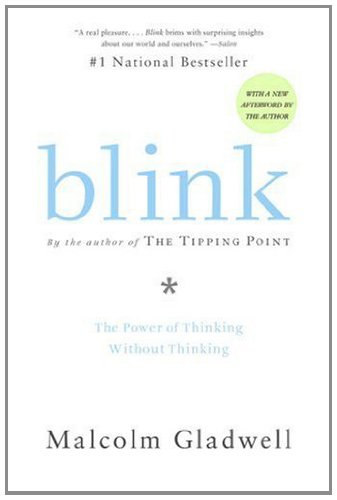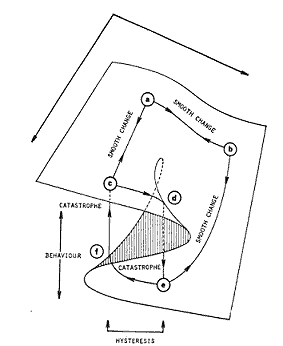The Long View: Blink

It is pretty easy to make fun of Malcolm Gladwell, but his star isn't riding as high as it did ten years ago, so I won't pile on at this point. Gladwell did a good job writing books that were really popular, and that is worthy accomplishment.
Blink
The Power of Thinking without Thinking
By Malcolm Gladwell
Little, Brown and Company, 2005
277 Pages, US$25.95
ISBN 0-316-17232-4
This book is about the mechanisms, benefits, and dangers of rapid decision-making. As was the case with the author's previous work, The Tipping Point, marketers may be obliged to read Blink simply to keep abreast of current theoretical confusion. Blink has merits: it is full of entertaining anecdotes about cognitive and perceptual research, not all of them fishy, and we get analyses of some famous marketing failures. Still, any book with a subtitle that explicitly promises to show us “the power of thinking without thinking” also implicitly promises to show us many absurdities, most of them unintentional. In that regard, Blink does not disappoint. What we have here is a failed attempt to synthesize some useful materials that should have been left as separate case studies.
As it is, the trouble starts right away, with the first two anecdotes.
The book's first anecdote concerns the purchase in the 1980s of a kouros, a kind of ancient Greek statue, by the Getty Museum. The scientists who examined the statue said it was genuine, from the fifth century BC. The art experts who were invited to see it (rather late, alas) took one look and guffawed. They were right to do so, since the statue turned out to be almost certainly modern. The second anecdote is about a psychologist who developed a system of close examination of the interaction of married couples; he could predict, with very high accuracy, whether they would still be married in 15 years. Several telltale signs turned out to be important, but the key was the subtle expression of contempt by one or both spouses.
These are two quite different kinds of perception. When an art expert views the whole of a sculpture or a painting and delivers an informed opinion about its date, that is “gestalt” perception, the perception of “pattern.” He perceives a totality that is an emergent property of the details of the piece, but which cannot be reduced to them. The psychologist, in contrast, was trying to set aside all the unimportant information and find the one important detail. That's what doctors do when they make a diagnosis. The book even has a story about the development at a public hospital of an amazingly simple and accurate protocol for evaluating possible heart-attack victims.
The author calls the second-type of perception “thin-slicing,” and notes its usefulness in making fast judgments under pressure. He assumes that this is the same thing the art experts were doing, apparently for no better reason than that, like experienced doctors making diagnoses, they were doing it fast: blink, in other words.
The term “gestalt” does not appear in the text, though there is a large body of psychological research on the matter. Another term that does not appear is “subliminal.” Its place is taken here by terms like “implicit association.” Something very close to the popular image of “subliminal advertising” is represented by the “primer experiment,” which purports to show that the performance of a test-taker can be affected by simply exposing him to certain ideas, or even just a certain vocabulary, before he takes a test. There is an old joke about a college class that trained its instructor to stand at a certain spot in the classroom by simply not answering his questions if he stood anywhere else. The book does not tell that story, but it does regale us with research studies that demonstrate that we can “know” things of which we are not aware. The book proposes that an active but non-Freudian unconscious normally does our thin-slicing for us.
The author is particularly interested in tests that purport to show how biases connected with race and gender can reside in purely verbal associations, quite aside from what the test subjects consciously believe, and even without regard to their personal histories. The author is half Jamaican, so he was astonished to find that his results from those tests were not different from those of white subjects. Some people might pause at that point to question whether the tests show what they are said to show, but skepticism plays no part in this book.
We do get some useful cautionary tales, however. Apparently, not only are people not particularly good at articulating their unconscious perceptions, but real memories may be distorted if you try to articulate them. Thus, if a witness to a crime is asked to describe the perpetrator and later views a lineup of suspects, he will tend to judge the suspects by his description: the memory is effaced by the words. Such a witness might be less reliable than one who views the lineup before being interviewed.
The book also reveals some specifics of the black art of marketing. For instance, there is the phenomenon of “sensation transference.” Among other things, this means that attractive packaging will cause consumers to report that a food product tastes better than they would would if the product were in bland or ugly packaging. Note also that sales for a class of product may decline if the consumer is given too many options. A supermarket aisle that has a wall of different brands of breakfast cereal may overload a shopper. A selection of just five or six types of cereal, in contrast, allows for a rapid choice: again, blink.
One of the stories we get is about “Millennium Challenge,” a war game conducted soon before the Iraq War. I recall rumors about it at the time: the outcome of the first part was that the American fleet was sunk in the Persian Gulf. The game was able to proceed only because the Pentagon directed the players to ignore that outcome and get on with the invasion. Perhaps with reason, the author applies the idea of information overload to what happened to the American side. Certainly the opposition commander's poverty of resources may have clarified his mind. However, his success does not seem to have been of the blink-effect variety: he was not insightful, but sneaky.
Interesting as they are, some of these anecdotes work to cross-purposes.
We hear yet again the hilarious tale of New Coke, that great marketing fiasco of the 1980s, in which the Coca Cola company temporarily replaced its signature product with a sweeter recipe. Blind taste-tests had shown that consumers really did prefer Pepsi to Coke. The problem was that the preference was an artifact of the test: a sip, rather than a whole can, and with no exposure to the product's traditional packaging or to the social settings in which soda is usually consumed. The moral was that thin-slicing requires context.
In contrast, we are told that female players of wind instruments only really got a fair opportunity to play in symphony orchestras after it became common, and sometimes mandatory, for musicians to audition behind a screen, so their gender could not be identified. Before that, music directors had always argued that women were not strong enough to play wind instruments. Indeed, they continued obstinately to argue that, even after a few women wind-instrument players had already joined some noted orchestras. The moral here was that thin-slicing required nothing more than cutting the auditions down to essentials.
This is not the kind of question one can answer a priori, but it seems unlikely that the screen-audition procedure really addresses the issue. It is one thing to play an audition piece; it is another to huff and puff through an evening of Wagner. Now, if the fat lady onstage can do it, maybe the skinny ones in the orchestra pit can do it too, but the audition screen is nothing to the purpose.
There are some things in this book I just don't buy. There is a great deal about the study of facial movements, and the little band of researchers who have allegedly reduced it to a science. If it were really true that you could reliably tell what someone was thinking through the study of microsexpressions, then these physiognomists would be among the master spirits of the age. As it is, they seem to be just people who are very good at describing how known liars lie. Then there is that long commercial the author gives for a world-music performer, who goes by the name of Kenna. The author spends many pages explaining why only the folly of marketers keeps the singer from universal acclaim: Kenna is Coke, fighting a music industry that tests only for Pepsi. Well, maybe, but the point is too speculative to use as an illustration in a theoretical discussion of decision-making.
Much the same, frankly, might be said of the whole book.
Copyright © 1996 by John J. Reilly

Blink: The Power of Thinking Without Thinking By Malcolm Gladwell



Comments ()